#prehistoric bear
Photo

On and off over the years I've been asked: Have you drawn a Short Faced bear? Cave bear? Any extinct genus? So with Prehistoric planet out I figured now might be a timely moment to finally do so ;) Cave bears basically look like huge Kodiaks so I chose the WIERD ANATOMY bois Arctodus Simus.
The short faced bear had... an...incredibly short face! Plus oddly long legs, they were built a little more like a hyena in shape. I dressed them speculatively like their only living cousins; the Spectacled/Andean bear.
My inspiration for this was all those old extinct animal posters/illustrations that were everywhere in my childhood. Usually showing a m/f pair of the species with some faded or generic local environment. Hope you like it! I was drawing more realistically here.
362 notes
·
View notes
Text
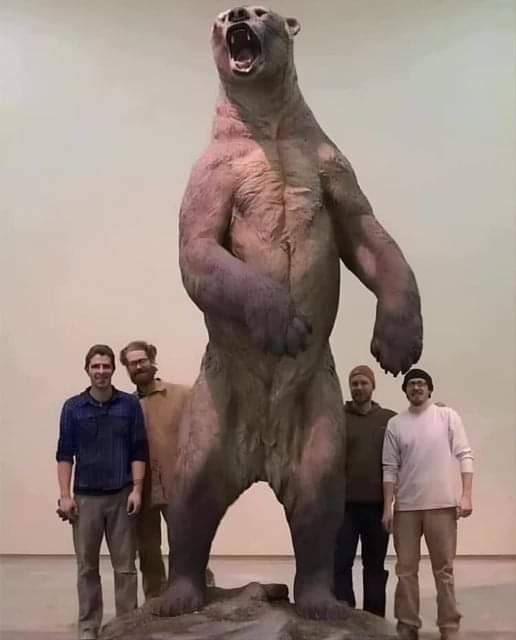
The short-faced bear is an extinct ancient bear that lived in North America 11,000 years ago. They were extremely large bears, weighing more than 1 ton (1000 kg) and standing up to 12 feet (3.7 m) tall. Despite their enormous stature, the Bear could run up to 40 miles per hour!
17 notes
·
View notes
Text

hemicyon-paisaje-baja
1 note
·
View note
Text

So I learned what a bear otter was the other day. Time for BIG otterwan
#cody: hows a tiny otter gonna help us in battle?#obiwan: hold my saber#the otter in codys imagination was supposed to be SO much smaller hahaha#but yeah otterwan should be the size of a lion i think thats fun#forgive me for only shitposting i am so busy and sleepy#prehistoric animals are so fun honestly#star wars#obi wan kenobi#codywan#commander cody#obi-wan kenobi#otterwan#otterwan kenobi#star wars the clone wars#cal draws#my art <3#star wars shitpost#bear otter
748 notes
·
View notes
Text
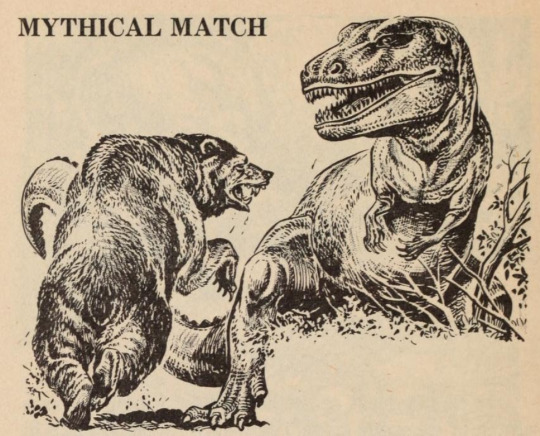

Animal Ghosts. Edited by Claudia Clow. Illustrated by Walt Disney Productions. 1971.
Internet Archive
#mammals#bears#brown bears#prehistoric#dinosaurs#theropods#tyrannosaurus rex#(is visibly in pain writing that last tag bc i KNOW ppl are gonna say something about the finger count)#combat
255 notes
·
View notes
Text
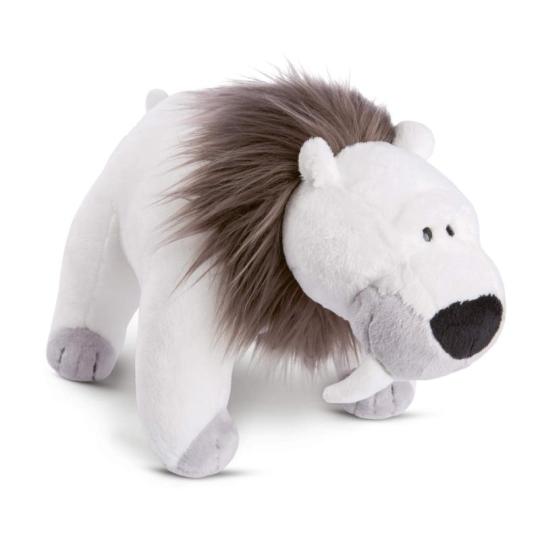
NICI Stone Age Friends - Sabretooth Polar Bear
#plush#plushie#plushies#plushblr#plushcore#toycore#soft toy#stuffed animals#nici#bear#polar bear#plush: bear#plush: prehistoric
76 notes
·
View notes
Text

A fossilized canine tooth of a cave bear, or Ursus spelaeus from the Drachenhöhle in Mixnitz, Austria. The fossils of these prehistoric bears were commonly found during times of war as byproducts of phosphate mining.
#synapsid#mammal#fossils#paleontology#palaeontology#paleo#palaeo#ursus#ursidae#cave bear#bear#pleistocene#cenozoic#prehistoric#science#paleoblr#ホラアナグマ#クマ属#クマ#化石#古生物学
72 notes
·
View notes
Text
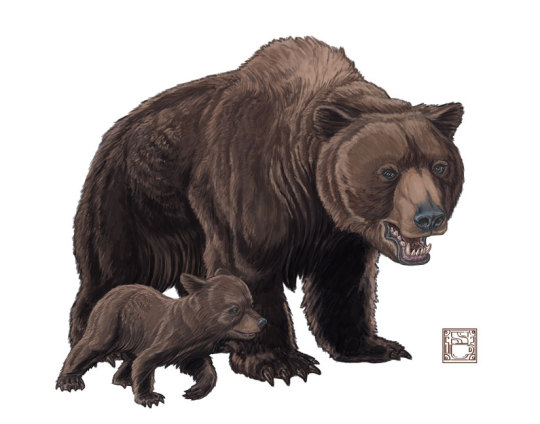
Good morning! Ursus spelaeus (CaveBear) reminds you that family time is important, and to watch out for Neanderthals.
Progress video for this piece - https://youtu.be/IZTSqJia7hM
#illustration#paleoart#art#paleontology#paleo#sciart#artistsontumblr#digitalart#science#digitalillustration#bear#cavebear#iceage#prehistoric#humanartist
69 notes
·
View notes
Text

Middle Jomon Toy Carving of a Japanese Black Bear, 5000 years old, 'Circles of Stone: Stonehenge and Prehistoric Japan' Exhibition, Stonehenge Visitor Centre, Wiltshire
#carving#bear#animals#symbols#toy#prehistory#prehistoric#Japan#Japanese#model#archaeology#relic#stonehenge#exhibition#black bear#ancient craft#ancient living#ancient history
68 notes
·
View notes
Text
Animal of the Day!
Arctodus (Arctodus simus)
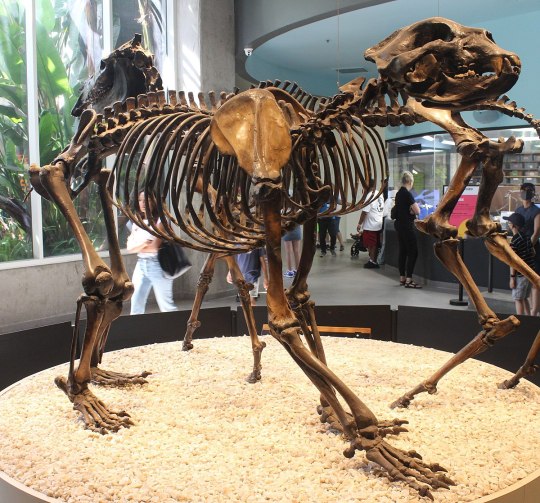
(Photo from La Brea Tar Pits)
Conservation Status- Extinct
Habitat- North America
Estimated Size (Weight/Length)- 950 kg; 3 m
Diet- Large mammals; Leaves; Fruits; Carrion
Time Period- Late Pleistocene
Cool Facts- Being possibly the largest terrestrial carnivore in North America, Arctodus was an absolutely massive bear that would put a grizzly to shame. Preferring open woodland, these massive bears are comparable to a long legged, short snouted grizzly as tall as an average man. Able to eat almost anything, the flexible range of the Arctodus speaks for itself. Arctodus was most likely solitary and hibernated through the winter, due to multiple skeletons being found in caves. Surprisingly, Arctodus was around at the same time modern grizzly and black bears roamed. Being much larger, Arctodus was seemingly a better competitor. At least, that is until climate change and humans killed off their main food source and resulted in the large bears going extinct.
Rating- 11/10 (Not your average Yogi.)
#Animal of the day#Animals#Mammals#Bears#Tuesday#January 10#Arctodus#biology#science#conservation#the more you know#Short-faced bear#Paleoweek#Paleolithic#Prehistoric#Megafauna#Extinct animals#Paleontology
227 notes
·
View notes
Text
For the first time, scientists have examined the soft tissues of a preserved prehistoric bear, enabling them to study internal organs and even extract brain tissue.
54 notes
·
View notes
Text

Siberian Cave Filled with Mammoth, Rhino and Bear Bones is Ancient Hyena Lair
Siberian locals have discovered an incredible prehistoric time capsule in what paleontologists believe is the largest ancient hyena lair ever found in Asia. The cave contained a whole menagerie of animal bones that had been undisturbed for about 42,000 years.
Paleontologists found the bones of both predator and prey animals from the Pleistocene epoch (2.6 million to 11,700 years ago), including brown bears, foxes, wolves, mammoths, rhinos, yaks, deer, gazelles, bison, horses, rodents, birds, fish and frogs.
The researchers posted a video of the discovery (in Russian) on June 20.
Residents of Khakassia, a republic in southern Siberia, discovered the cave five years ago, according to a translated statement from the V. S. Sobolev Institute of Geology and Mineralogy. However, due to the remoteness of the area, paleontologists weren’t able to fully explore and examine the remains until June 2022.
They collected around 880 pounds (400 kilograms) of bones, including two complete cave hyena skulls. The paleontologists suspect the hyenas lived in the cave because the bones had gnaw marks consistent with hyena teeth.

“In addition, we came across a series of bones in anatomical order. For example, in rhinos, the ulna and radius bones are together," Dmitry Gimranov, senior researcher at the Ural Branch of the Russian Academy of Sciences, said in the statement. "This suggests that the hyenas dragged parts of the carcasses into the lair."
The researchers also found the bones of hyena pups — which tend not to be preserved as they are so fragile — indicating they were raised in the cave. "We even found a whole skull of a young [hyena], many lower jaws and milk teeth," Gimranov said.
Siberia is rich with the remains of Pleistocene animals. Their remains are not old enough to be fossilized, or replaced with rock through a mineralization process. The bones, and sometimes skin, flesh and even blood of these animals are often not much different than they were the year they died. This is thanks — in large part — to the cold weather preserving the remains.
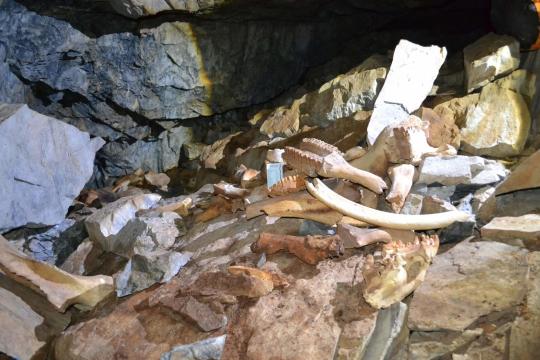
The bones have been sent to Yekaterinburg for further analysis.“[T]he finds will also tell us about the flora and fauna of that time, what animals ate, what the climate was like in this area,” Dmitry Malikov, senior researcher at the Institute of Geology and Mineralogy of the Siberian Branch of the Russian Academy of Sciences, said in the statement.
“We will also get important information from the coprolites,” the fossilized feces of the animals, he added.
By Kristin Hugo.
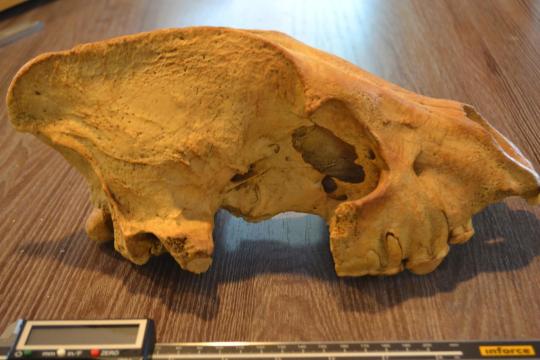
#Siberian Cave Filled with Mammoth Rhino and Bear Bones is Ancient Hyena Lair#prehistoric#paleontologist#paleontology#Pleistocene epoch#fossil#bones#skeleton#archeology#archeolgst#history#history news#ancient history#ancient culture#ancient civilizations
37 notes
·
View notes
Text
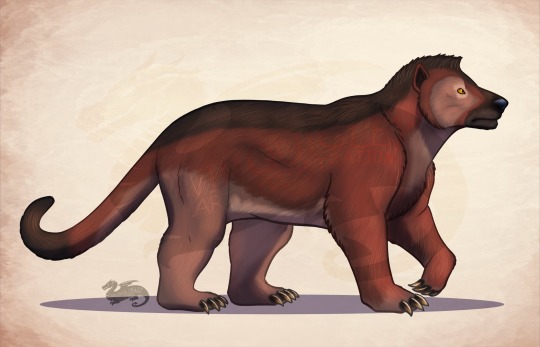
Paleovember 2023, Amphicyon!
Coming from the Miocene, the members of this genus and it's family are colloquially referred to as 'bear-dogs' due to possessing traits similar to both bears and dogs, whom they were related but not ancestral to. This was a widespread genus, ranging across Europe Africa, Asia, and North America, with the largest species, A. ingens, growing up to the size of a polar bear. These were adaptable and generalist hunters, able to subsist on a wide range of foods. This initially allowed amphicyonids to outcompete an earlier group of predators, the hyaenodonts. Ironically, though, this jack-of-all-trades approach failed with the arrival of modern, more specialized carnivoran groups, including cats, dogs, bears, and hyenas.
#amphicyon#bear dog#carnivora#mammal#illustration#miocene#paleoart#paleontology#cenozoic#prehistoric#art#artwork#cartoon#digitalart#procreate#artist on tumblr
30 notes
·
View notes
Photo




Lump (he/him)
Build-a-Bear ankylosaurus, bought online September 2022.
Lump tried wearing some of the spare bear clothes I have, but he’s a little too big for trousers and a little too spiky for shirts... and the tutu didn’t really seem his style. He had fun trying though!
222 notes
·
View notes
Text

a friend
#animal art#digital art#paleontology#digital illustration#illustration#procreate#vulture culture#animals#creature art#paleoart#smilodon#bear#mammoth#hes like a bear mammoth smilodon fusion#hes me if u even care..#critter#prehistoric#ice age
88 notes
·
View notes
Text

Restoration of the head of the short-faced bear, Arctodus simus, by Charles R. Knight. From Terra: The Member's Magazine of The Natural History Museum of Los Angeles County. Volume 31, No. 1. Fall 1992.
Internet Archive
233 notes
·
View notes